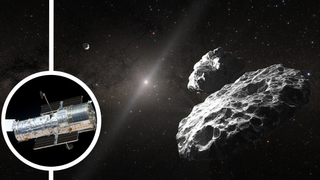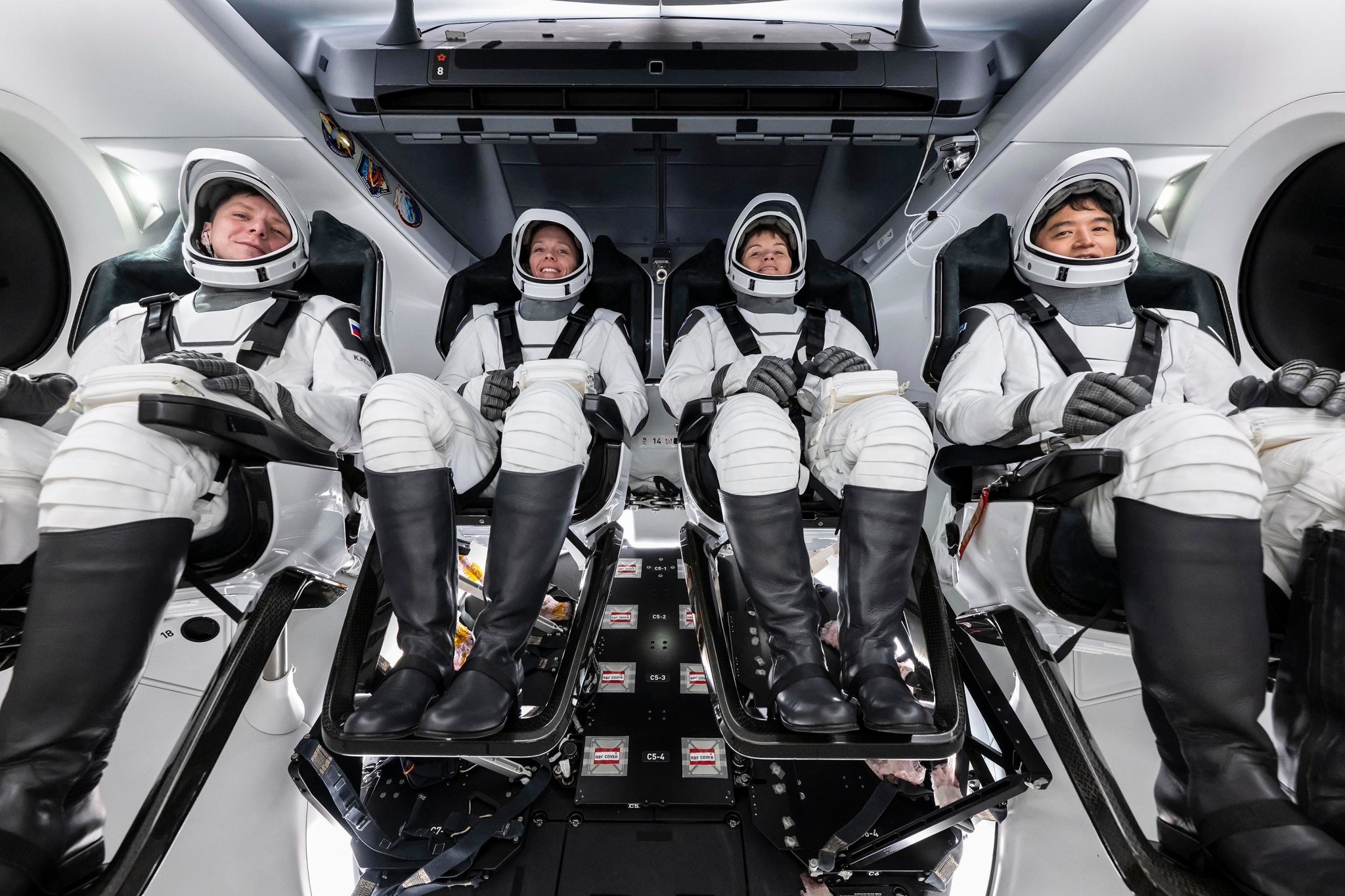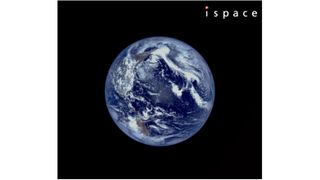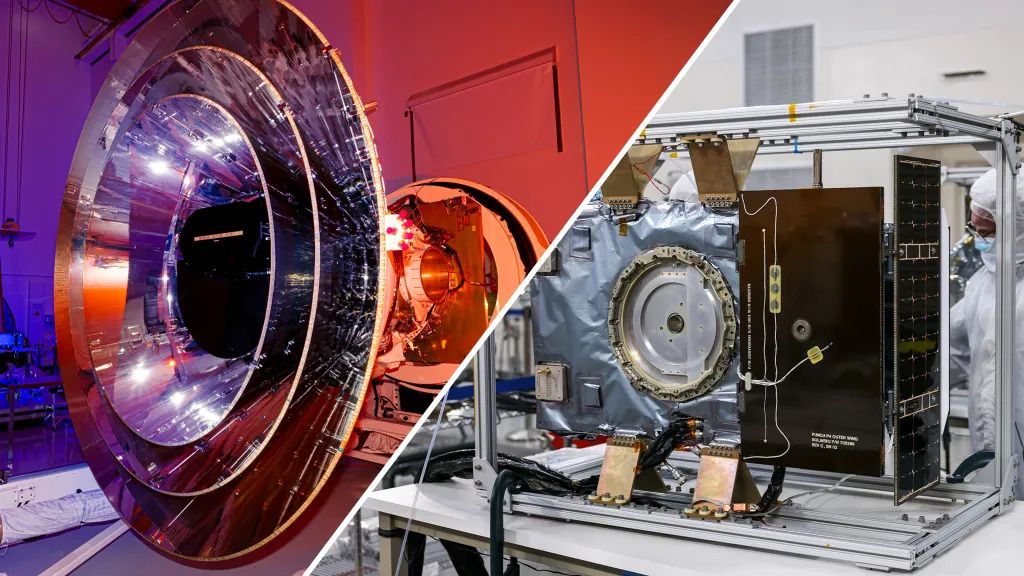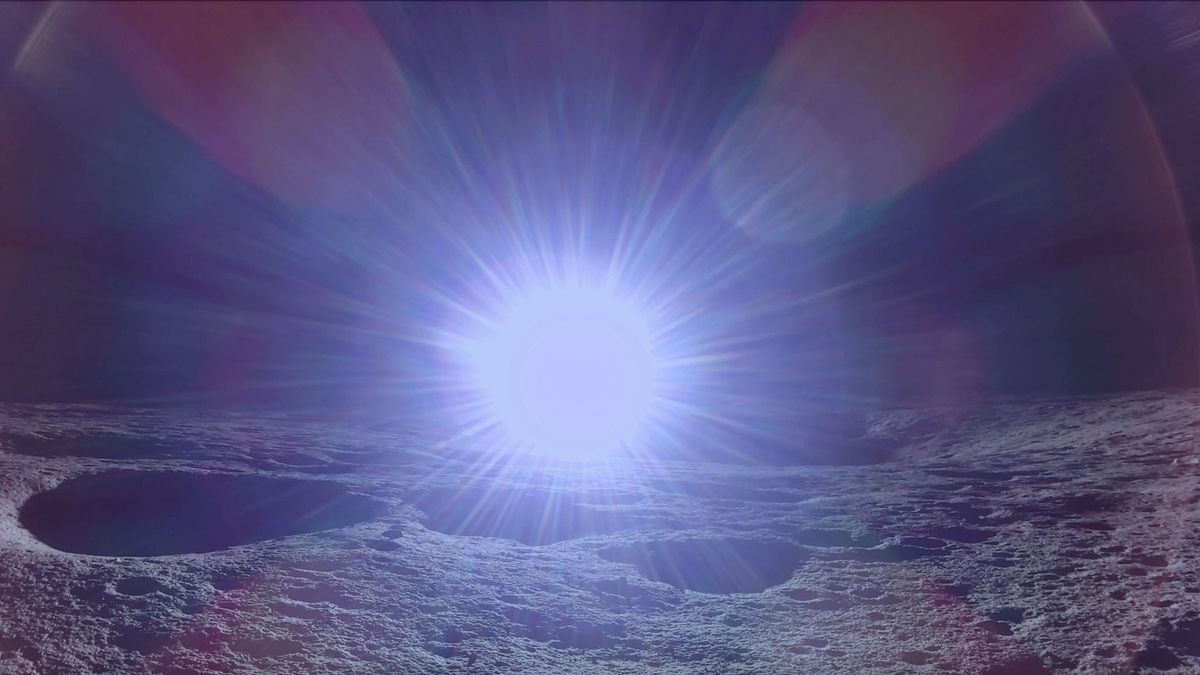NASA’s Hubble Space Telescope has discovered that a system of asteroids in the distant Kuiper Belt may be triplets, not twins as previously suspected. If so, the stable trio of icy space rocks would be just the second example of three gravitationally bound space rocks found in the Kuiper Belt, the doughnut-shaped region of icy bodies that lurks out beyond the orbit of Neptune. The discovery could also challenge our understanding of how Kuiper Belt objects (KBOs) form. An illustration of the 148780 Altjira system of two or maybe three…
Read MoreCategory: Space Stations
Space stations in orbit or planned
The US will ‘plant the American flag on the planet Mars and even far beyond,’ Trump tells Congress
President Donald Trump told lawmakers that U.S. astronauts will one day carry the American flag to Mars and beyond during a speech before the joint session of Congress late Tuesday (March 5). “We are going to conquer the vast frontiers of science, and we are going to lead humanity into space and plant the American flag on the planet Mars and even far beyond,” Trump told Congress during his speech to a joint Senate and House of Representatives on Tuesday night. “And through it all, we are going to rediscover…
Read MoreNASA Sets Coverage for Agency’s SpaceX Crew-10 Launch, Docking
The crew of NASA’s SpaceX Crew-10 mission pictured during an equipment test at the agency’s Kennedy Space Center in Florida. Credit: SpaceX Editor’s Note: This advisory was updated March 5, 2025, to correct that media may ask questions by phone only during the mission overview teleconference. NASA will provide coverage of the upcoming prelaunch and launch activities for the agency’s SpaceX Crew-10 mission to the International Space Station. Liftoff is targeted for 7:48 p.m. EDT, Wednesday, March 12, from Launch Complex 39A at NASA’s Kennedy Space Center in Florida. The…
Read MoreTouch down on the moon with private Blue Ghost lander in this amazing video
Blue Ghost had its eyes wide open during its epic moon landing last weekend. On Sunday (March 2), Blue Ghost — built and operated by the Texas-based company Firefly Aerospace — became just the second private spacecraft ever to soft-land on the moon, coming to rest in the near side’s Mare Crisium (“Sea of Crises”) region. We can now relive Blue Ghost’s historic descent, thanks to stunning footage captured by the lander. Firefly Aerospace’s Blue Ghost lunar lander captured this shot of its own shadow on the moon just after…
Read More‘Stuck’ NASA astronauts on ISS grilled on Earthly politics as long 9-month mission nears end. ‘From my standpoint, politics is not playing into this at all.’
Butch Wilmore and Suni Williams are getting ready to wrap up their surprisingly long — and unexpectedly controversial — orbital stay. The two NASA astronauts arrived at the International Space Station (ISS) in June on the first-ever crewed mission of Boeing’s Starliner capsule. They were supposed to stay at the station for just a week or so, but Starliner experienced thruster problems on the way up, and NASA extended the mission multiple times to investigate. Finally, in late August, the agency announced that Starliner would come back to Earth uncrewed,…
Read MoreSee Earth shine like a Blue Marble in this stunning photo by Japan’s private Resilience moon lander
The private Resilience moon lander now has a target touchdown date. The Tokyo-based company ispace, which built and operates Resilience, announced Monday (March 3) that it’s eyeing June 5 for the spacecraft’s lunar touchdown attempt. The current plan calls for Resilience to land that day at 3:24 p.m. EST (2024 GMT) near the center of Mare Frigoris (“Sea of Cold”), a basaltic plain in the moon‘s northern reaches. But that’s not set in stone. An image of Earth taken by the private Resilience lunar lander on Feb. 18, 2025. (Image…
Read MoreNASA delays launch of SPHEREx and PUNCH missions to March 6
NASA’s SPHEREx and PUNCH missions will need to wait a little longer before heading to space. After delaying the launch of these missions three times — they were originally slated to take to the skies on Feb. 27 — the space agency has postponed liftoff once again for SPHEREx and PUNCH. Both payloads will still be launching aboard the SpaceX Falcon 9 rocket selected for the task, which had most recently targeted Tuesday (March 4) for launch. Now, the pair will remain Earth-bound until Thursday (March 6). They’ll liftoff from…
Read MoreSpaceX calls off Starship Flight 8 launch test due to rocket issues (video)
The next Starship megarocket to fly is stuck on Earth for a little while longer. SpaceX aimed to launch the eighth test flight of Starship — the biggest and most powerful rocket ever built — from its Starbase site in South Texas on Monday evening (March 3). That didn’t happen, however. The company encountered issues with both of the vehicle’s elements — its Super Heavy booster and Ship upper stage — and called the launch off after holding the countdown clock at T-40 seconds. SpaceX’s Flight 8 Starship rocket stands…
Read MoreSunrise on the moon! Private Blue Ghost lander captures amazing shot after historic lunar touchdown (photo)
Firefly Aerospace’s Blue Ghost lander has captured a gorgeous shot of sunrise on the moon as it begins its workday on the lunar surface. Blue Ghost aced its lunar landing attempt on Sunday (March 2), setting down close to Mons Latreille, a solitary lunar peak in the vast basin Mare Crisium (“Sea of Crises”) in the northeastern region of the moon’s near side. And the spacecraft is already getting to work, starting up its science payloads and capturing amazing images of its surroundings and the distant Earth from the lunar…
Read MoreStation Science Top News: Feb. 27, 2025
Preventing biofilm formation in space Ashley Keeley, University of Idaho, holds an anti-bacterial coating sample. University of Idaho Student Payload Opportunity with Citizen Science Team Two anti-microbial coatings reduced formation of biofilms in microgravity and have potential for use in space. Controlling biofilms could help protect human health and prevent corrosion and degradation of equipment on future long-duration space missions. Biofilms, communities of microorganisms that attach to a surface, can damage mechanical systems and present a risk of disease transmission. Bacteria Resistant Polymers in Space examined how microgravity affects polymer…
Read More